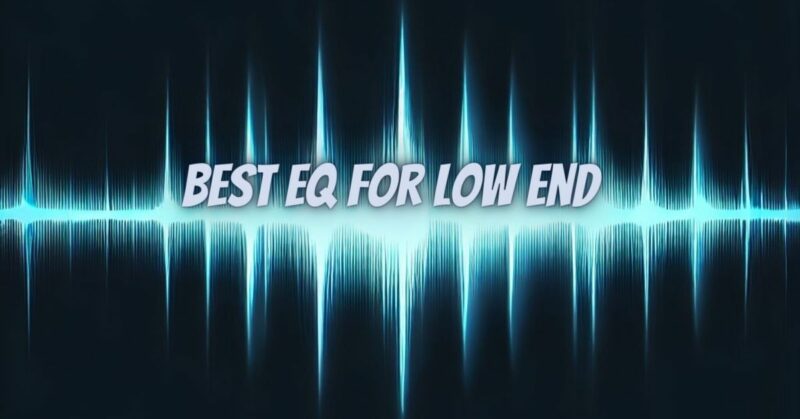The best EQ for low end is the one that works best for your mix. There is no one-size-fits-all answer, as the best EQ settings will vary depending on the instruments and genres you are working with.
However, there are a few general tips that can help you choose the right EQ for low end:
- Use a variety of EQ filters: There are many different types of EQ filters available, such as high-pass, low-pass, band-pass, and shelf filters. Each type of filter has a different effect on the frequency spectrum, so it’s important to use a variety of filters to get the desired effect.
- Make small adjustments: It’s easy to overdo it with EQ, so it’s important to make small adjustments and listen carefully to the results. Even a small boost or cut can make a big difference in the sound of your mix.
- Use reference tracks: One of the best ways to learn how to EQ low end is to listen to reference tracks. Pay attention to the way that the low end is mixed in your favorite tracks, and try to replicate that sound in your own mixes.
Here are a few specific EQ plugins that are popular for low end mixing:
- FabFilter Pro-Q 3: The FabFilter Pro-Q 3 is a powerful EQ plugin that offers a variety of features, including a dynamic EQ mode and a mid/side mode. It’s a great choice for all types of music production, including mixing low end.
- Waves Abbey Road TG Mastering EQ: The Waves Abbey Road TG Mastering EQ is a plugin that emulates the sound of the classic TG mastering console. It’s a great choice for adding warmth and punch to your low end.
- iZotope Ozone 9 Equalizer: The iZotope Ozone 9 Equalizer is a versatile EQ plugin that offers a variety of features, including a filter matching mode and a spectral shaper. It’s a great choice for all types of music production, including mixing low end.
Additional tips for mixing low end with EQ:
- Use a high-pass filter (HPF) to cut out unwanted low frequencies. This can help to clean up the sound of your mix and make it sound more clear and punchy. A common rule of thumb is to set the HPF to around 20-30Hz for most instruments, but you may need to adjust it depending on the specific instrument and genre you are working with.
- Use a parametric EQ to boost or cut specific frequencies. This can be used to add warmth, punch, or clarity to your low end. For example, you might boost the low frequencies of the bass guitar to add warmth, or cut the low frequencies of the kick drum to make it sound more punchy.
- Use a shelf filter to boost or cut all frequencies above or below a certain point. This can be used to brighten up your low end or to tame it down if it’s too boomy. For example, you might boost the shelf filter around 80Hz to brighten up the low end of the mix, or cut the shelf filter around 200Hz to tame down a boomy bass guitar.
- Use sidechain compression to create space between the kick drum and the bass. This can help both instruments to stand out more in the mix. To do this, you would route the kick drum to the compressor of the bass guitar track. Then, you would set the compressor to duck the bass guitar whenever the kick drum hits. This will help the kick drum to stand out more and create a more punchy low end.
Here are some additional tips that you may find helpful:
- Use a spectrum analyzer to visualize the frequency content of your mix. This can help you to identify areas where you may need to make EQ adjustments.
- Experiment with different EQ settings and techniques. There is no right or wrong way to EQ low end, so it’s important to experiment and see what works best for your mix.
- Don’t be afraid to ask for help from a more experienced engineer. If you’re struggling to get the sound that you want, don’t be afraid to ask for help from someone who knows more about EQ and mixing.
By following these tips, you can use EQ to create a solid and punchy low end for your mixes.


